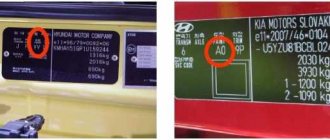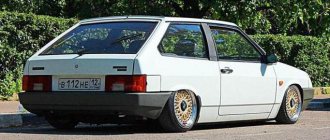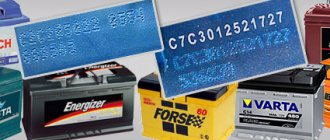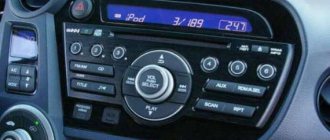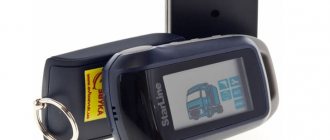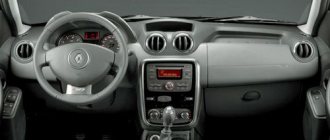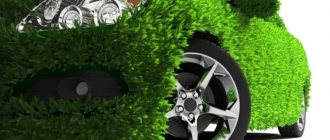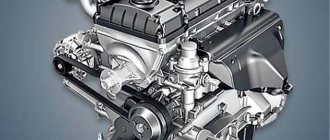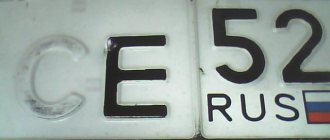How can you find out the country of manufacture using the VIN?
VIN code is a unique identification number of a vehicle (VV), consisting of 17 characters and 3 parts (WMI, VDS and VIS). Information about the country of manufacture is contained in the first part - World Manufacturers Identification.
WMI consists of 3 characters:
- The first is the country of origin. For example, Japan (J), Germany (W), USA (1, 4, 5), etc.
- The second is an automobile concern. For example, Mercedes Benz (D), BMW (B), Nissan and Infiniti (N), etc.
- The third is the type of vehicle.
There are often situations when the VIN code of car brands such as Hyundai, Ford, Kia and many others, copied from the registration certificate, is not recognized. This happens because the first character is X, which identifies the fact that the vehicle was produced at Russian enterprises. In such cases, the identification number corresponding to the world category can be found on the body.
There is another way to find out the country of the car’s manufacturer by VIN code - look it up online on the AutoHistory website. In this case, in addition to general information, you will receive a report with a complete operating history of the vehicle, which will allow you to avoid buying a car with hidden problems.
What is VIN, how to decipher it, and how to track the history of a car using it
1. What is VIN?
VIN is an abbreviation for the English “vehicle identification number”, which means “vehicle identification number”. This is a unique 17-character alphanumeric code that is the primary means of identifying a vehicle throughout its life. The VIN is assigned to the car by the manufacturer and does not change, unlike documents - they are issued to the car in the country of operation and change if its “registration” changes. In addition, VIN is not just a set of numbers: it contains information about the manufacturer, year of manufacture and characteristics of the car.
By the way, precisely because of the decoding of the abbreviation VIN, phrases like “VIN number” are not entirely correct, since they are a tautology. And to ensure uniqueness, the VIN never contains the Latin letters I, O and Q due to their similarity to the numbers 1 and 0.
2. Why do you need a VIN?
As mentioned above, the VIN provides two main functions: it identifies the car and carries information about it. It is the first one indicated in the registration documents for the car, such as a vehicle passport or registration certificate. From the VIN you can glean information about where and when the car was manufactured and what equipment it received at the manufacturer. Well, in addition, it is by VIN that you can track the history of the car and find out how many owners it had, whether it was in an accident, whether it is in collateral, whether it is listed as stolen, and whether it has restrictions on registration actions.
3. Where can I find the VIN?
The vehicle identification number is duplicated in several places - this makes it easier to find and more reliably protects it from illegal actions. Depending on the car, you can find the VIN under the windshield, on the threshold or pillar of the driver's door, on the partition of the engine shield, on the “cup” of the front shock absorber, on the engine and at some other points. It is worth noting that the VIN can be stamped either directly on the body or on a special number plate attached to the body with rivets.
4. How to decipher VIN?
Deciphering the VIN on your own is a rather labor-intensive procedure, since you will need to arm yourself with data tables and consistently figure out what the symbols of the identification number mean.
In general, the VIN consists of three parts. The first three characters contain information about the manufacturer and country of manufacture of the car. Symbols 4 to 8 hide information about the model, its body type, installed engine and equipment level. The ninth character is the so-called control sign: it carries encrypted information about the authenticity of the VIN itself. The next 2 characters usually contain information about the year of manufacture of the car and the manufacturer, and the last 6 characters are the serial number of the car.
Now there are many online services offering free VIN decoding, so you don’t have to waste time reading it yourself. Such work makes sense only in certain cases - for example, when it is important to find out exactly how an existing rare car came off the assembly line, since this may affect its value. You can decipher the VIN, for example, in an electronic spare parts catalog like Elcats.
5. How to track the history of a car by its VIN?
As mentioned earlier, VIN allows you to find out much more than just data about the manufacturer and equipment of the car. In certain cases, an identification number can reveal to you a complete biography of the car, telling you about all the nuances of its life. Let's look at the main services that will help with this.
Residents of Moscow and the Moscow region are by far the luckiest: for cars registered in this territory, complete information is available on the Autocode portal - here . Using this free service, you can find out general information about the car, ownership history, including the number of owners, information about whether the owners were legal entities, accident history, including their date and damage received, information about the commercial use of the car (for example, in a taxi) and even mileage data. Armed with such a powerful tool, you can, for example, check a car before buying or find out what the past of an existing car was like.
Articles / America Checking a car from America: how to use Carfax Duties, and now also the dollar exchange rate... In general, only millionaires, and dollar ones at that, will soon carry used cars from the USA. But thousands of cars from overseas remain on the secondary market. We r… 36899 0 3 12/18/2014
Those who live outside the capital region can also learn something about the history of the car by having its VIN. By going to the traffic police website, here , you can get data on the car’s registration history and the presence of restrictions on registration actions, as well as find out whether the car is listed as stolen. The traffic police also checks whether a car was involved in an accident, but this database cannot claim to be exhaustive, and the possibility that some accidents will not be reflected in the car’s history is quite high.
Another service that allows you to find out the ins and outs of a car by its VIN is the register of pledge notifications on the website of the Federal Notary Chamber of the Russian Federation. By going here , you can try to find out if the car is pledged, for example, with a bank. It is worth noting that this database is also not yet characterized by absolute completeness of data, and in some cases, data on collateral may not be reflected.
Well, the fourth official service that provides information about a car by VIN is the website of the Russian Union of Auto Insurers. By going here and filling out the form provided, you can obtain information about the existing MTPL agreement for a car, and also check whether certain drivers are included in the number of persons allowed to drive under this agreement.
There are also non-governmental sources from which you can glean information about the car’s past. If he arrived from the USA or Canada, then you can find out more about the years spent overseas using Carfax or Autocheck .
How to check through the online service "AutoHistory"?
Everything is extremely simple - from any device with Internet access, you need to enter the car’s VIN code into a special form on the website page and click on the “Check” button. The verification procedure takes a few minutes and the cost of the service is affordable to all categories of the population.
As a result, you receive a full report in which information about the country of manufacture will be indicated in the “Options” item:
If the country of assembly is not Russia (as in the example presented above), then the report additionally reflects customs data:
Use the "AutoHistory" service - protect yourself from scammers and the purchase of a problematic vehicle!
It depends on what we mean by “assembly”.
If the car is welded from pipe scraps, does not have a VIN on the improvised “body”, is driven by a chainsaw, and all its wheels are different, then the assembly is definitely garage-made. If the car looks like a car, has a VIN in several places on the body, as well as a vehicle passport, then the assembly is most likely factory-made.
If we mean the country and manufacturer, then the first three characters of the VIN will help us. The fact is that VIN is not a random combination of letters and numbers, it is a strict cipher made according to certain international rules. The first three characters of the VIN are called WMI (World Manufacturer Identification) and contain information about where and by whom the car was manufactured.
The first two characters of the VIN determine the country of manufacture, the third - the make of the car. For example, if the first character of the VIN is in the range from A to H (Latin letters), then the manufacturer is located in Africa. Yes, yes, they make cars there too! For example, a Toyota made in Egypt starts with CA, made in Morocco with CF, South Africa with AH, and Japan with JT.
European manufacturers got the initial letters from S to Z. Audi made in Hungary starts with TR, and in Germany with WA or WU. By the way, Chinese Audi starts at LF. English Toyota starts at SB, German at WT, Portuguese at WT, Chinese at LF.
Russian factories received the letters X and Z. For example, a Russian-assembled Ford will have a VIN at X9 (or Z6), a Russian Hyundai starts at Z9, a Kaliningrad Kia at XW, as does a Kaluga-based Skoda.
So, by the first three characters of the VIN you can understand which manufacturer produced this car and in which country
. To understand this, you need to use a special reference book. You can google the details using the query “VIN WMI”, this directory is freely available.
How to decipher the VIN code?
The vehicle identification code consists of three parts, each of which carries certain information about the vehicle. All of them have certain code names, which look like this:
- WMI (first three characters);
- VDI (second five characters);
- VIS(last seven characters).
It is generally accepted that the first three digits of the VIN code are directly responsible for the index of the manufacturer. The first of them determines the geographical area of the manufacturer, the second - the country of origin and the third - the name of the company. The next five characters carry an information load and provide the vehicle owner with information about the body, engine, series and model number. These values are individual for a specific car model. The last seven digits are the distinguishing feature of the code. They determine the correctness of the entire VIN code.
Why is decryption necessary?
First of all, potential car buyers need car decoding. It makes it possible to check the seller of the vehicle for the veracity of the information provided. Unfortunately, today almost all sellers are silent about some information. Quite often the year of manufacture and technical characteristics of the car are hidden from the buyer.
Where is the VIN code located: how to find it?
The location of the car code directly depends on the country of the manufacturer. Each manufacturing country prefers a specific location. Cars manufactured in the USA have a VIN code mainly in the following places:
- Under the windshield;
- On the body;
- On the iron plate under the hood (on the driver's door or on the driver's door side pillar).
In exceptional cases, an iron plate may be placed directly inside the dashboard.
The country of manufacture is indicated in the code in the first character of the VIN code. Among the many options, the most common are:
What is a check digit and why is it needed?
Many automakers use the ninth digit in the VIN code as a control digit. This value is considered the authenticity identifier of the entire code. It is calculated using a certain mathematical algorithm. To check whether the VIN code is the real owner of the car, you must do the following:
- Multiply all numbers (except 9 control);
- Divide the result by 11.
As a result of the mathematical operations performed, the final value must coincide with the number located in 9th place. If these two values coincide, then the VIN is most likely real.
Watch a video on how to determine the equipment by VIN code:
It
is possible to obtain information about a car that has already been purchased or is being considered before purchasing. To do this, you must have originals or copies of:
- Certificates of registration of ownership of the car;
- Technical passport of the vehicle;
- Directly the car itself.
Procedure for initializing a car using the VIN code
You can find out the VIN code of a specific car from the Certificate of Ownership or the corresponding column of the Technical Passport, duplicated by the column “Body No.” Using a seventeen-digit number consisting of numbers and letters, you can read information about the equipment in full, and also use it when searching for original spare parts.
It is easier to decipher the encoding by dividing it according to world standards into 3 components: WMI, VDS, VIS. They contain important data. The first 3 characters on the left identify the manufacturer. In the first place is a figure enclosing the geographical area; on the second - the sign of the country from this zone; on the third - a specific manufacturer.
In more detail, when identifying the country of origin, it is worth using the following data (according to the first symbol, the goods belong to the countries):
- 1, 4, 5 – USA
- 2 – Canada
- 3 – Mexico
- 9 – Brazil
- J - Japan
- K – Korea
- Y - Sweden
- S – England
- V - Spain
- W – Germany
- Z – Italy
What does the VIN code mean and where to look for it on different car brands?
What does a car's VIN mean and where to look for it on different car brands? Every vehicle has its own identification number. It consists of 17 numbers and letters, thanks to which you can find out all the “ins and outs” of the car, and not only information about when, where and by whom it was released, but also to track whether the car was stolen or in an accident, not whether he was drowning or whether he was on fire. Having such information when buying a used car allows you to avoid the risks of buying a “problem” car. There are no uniform international regulatory documents that are necessary to establish the principles for constructing the VIN. Anyone to manufacture must arbitrarily shape it. The structure of the system is such that the numbers should in no case be repeated - the signs should be combined in the same way for 30 years. A vehicle must have only one VIN. It is usually assigned by the final manufacturer, that is, those from whom the used car comes out, and it does not matter how it is made - from scratch or assembled from large components. The vin number must be verified without fail. The identification number has sections (parts) that contain significant characters - Arabic numbers from zero to nine and Latin letters (with the exception of I, O, Q, because these characters can be easily transferred to others). You can also use delimiters that mark the beginning and end of the code, or several parts separating it from each other.
These signs must be different from others.
VIN number consists of three parts: WMI VDS VIS
• WMI (World Manufacturers Identification) - world manufacturer index (from the 1st to the 3rd characters of the number);
• VDS (Vehicle Description Section) - descriptive part (from the 4th to the 9th characters of the number);
• VIS (Vehicle Identification Section) - distinctive part (from the 10th to the 17th characters of the VIN number)
WMI
WMI - International Manufacturer Identification Code. Consists of three characters (letters or numbers).
The first character indicates a geographic area, the second indicates a country within that area, and the third indicates a specific manufacturer (sometimes a vehicle type).
So, the first character of WMI is a letter or number representing the geographic area code. Each zone is assigned several symbols:
• from A to H - Africa; • from J to R - Asia; • from S to Z - Europe; • from 1 to 5 - North America; • from 6 to 7 - Oceania; • from 8 to 9 - South America;
The second character (country code) is a letter or number that represents the country. To ensure flexibility and unambiguity in identification, a specific country is determined by a combination of the first and second digits of the code:
Africa
| AA-AH South Africa | AJ-AN Ivory Coast | BA-BE Angola |
| BF-BK Kenya | BL-BR Tanzania | CA-CE Benin |
| CF-CK Madagascar | CL-CR Tunisia | DA-DE Egypt |
| DF-DK Morocco | DL-DR Zambia | EA-EE Ethiopia |
| EF-EK Mozambique | FA-FE Ghana | FF-FK Nigeria |
Asia
| JA-JT Japan | KA-KE Sri Lanka | KF-KK Israel |
| KL-KR South Korea | LA-L0 China | MA-ME India |
| MF-MK Indonesia | ML-MR Thailand | NF-NK Pakistan |
| NL-NR Türkiye | PA-PE Philippines | PF-PK Singapore |
| PL-PR Malaysia | RA-RE UAE | RF-RK Taiwan |
| RL-RR Vietnam | RS-R0 Saudi Arabia |
North America
| 1A-10 USA | 2A-20 Canada |
| 3A-3W Mexico | 3X-37 Costa Rica |
| 38-30 Cayman Islands | 4A-40 USA |
| 5A-50 USA |
Oceania
| 6A-6W Australia | 7A-7E New Zealand |
South America
| 8A-8E Argentina | 8F-8K Chile | 8L-8R Ecuador | 8S-8W Peru |
| 8X-82 Venezuela | 9A-9E Brazil | 9F-9K Colombia | 9L-9R Paraguay |
| 9S-9W Uruguay | 9X-92 Trinidad and Tobago | 93-99 Brazil |
Despite the parameters clearly stated in the standard, the designation assigned to the country of origin is not always used. For example, cars of the European branch of General Motors, whose head office is in Germany, are labeled as W0, regardless of the country of origin (be it Germany, Spain, Great Britain, Belgium or Poland).
The third character is a letter or number that is assigned to the manufacturer by the national organization. Can also mean vehicle type or production department. The number 9 as the third digit is used if the manufacturer produces less than 500 cars per year.
Just like country identification, plant identification requires knowledge of all three WMI characters. For example, here are WMI codes that correspond to some factories located in the CIS:
| WMI | Company |
| XTA | AvtoVAZ |
| XTB | Moskvich |
| XTC | Kamaz |
| XTD, Y6L | LuAZ |
| XTE | ZAZ |
| XTH, X96 | GAS |
| XTJ | SeAZ |
| XTK | IzhAvto |
| XTT | UAZ |
| XWF | Avtotor |
| XWK | IzhAvto |
| X0C, X7M | TagAZ |
| X1C | KrAZ |
| X7D | RosLada |
| X9L | GM-Avtovaz |
| Y8A | LAZ |
In other geographical areas, manufacturers have the following indices:
| 1 - Chevrolet | A - Mitsubishi (USA) | G - General Motors | N - Infiniti |
| 2, 5 — Pontiac | B - BMW | H - Acura | N - Nissan |
| 3 - Oldsmobile | B - Dodge | H - Honda | O - Opel |
| 4 - Buick | B - VW (Brazil) | J - Jeep | P - Plymouth |
| 6 - Cadillac | C - Chrysler | J - Mercedes Benz (USA) | S - Isuzu |
| 7 - GM Canada | D - Mercedes Benz | L - Lincoln | S - Suzuki |
| 8 - Saturn | F - Ferrari | M - Hyundai | T - Lexus |
| A - Audi | F - Fiat | M - Mercury | T - Toyota |
| A - Jaguar | F - Ford | M - Mitsubishi | U - BMW (USA) |
| A - Land Rover | F - Subaru | M - Skoda | V - Volkswagen |
| V - Volvo |
VDS
The second part of the VIN code is the description - a descriptor of the car. The 4th, 5th, 6th, 7th, 8th characters are used to determine the type of vehicle and describe the characteristics of the vehicle:
• model line, • body type, • engine type, • steering wheel position, • power system and transmission type, • drive, • etc.
Each manufacturer has its own set of parameters, its own sequence and its own unique designations.
The 8th character is used in most cases to determine the engine type. Unused positions are filled with signs at the discretion of the manufacturer. The 9th character - for manufacturers in the USA and China (as well as those who export cars to the USA) - is a check digit, which is one of the means of protection against number alterations. European, Japanese and Korean companies do not always follow the standard, and use this symbol for additional information about the car.
VIS
The third part of the VIN - the index part of the identification number (VIS) - consists of eight characters, and the last four characters of this section must be numbers. Moreover, information about the model year and manufacturer is not strictly fixed by the standard, but is only advisory in nature.
The 10th character of the VIN usually indicates the model year of the vehicle.
It should be remembered that the model year can be significantly ahead of the calendar year and counted not from January 1, but, for example, from August (Audi) or July (VAZ) of the previous calendar year.
Some manufacturers, such as Renault, Mercedes-Benz, Toyota, do not indicate the model year in the VIN code at all. The year of manufacture is indicated on a plate on the body.
| Year of issue | Designation | Year of issue | Designation | Year of issue | Designation |
| 1971 | 1 | 1986 | G | 2001 | 1 |
| 1972 | 2 | 1987 | H | 2002 | 2 |
| 1973 | 3 | 1988 | J | 2003 | 3 |
| 1974 | 4 | 1989 | K | 2004 | 4 |
| 1975 | 5 | 1990 | L | 2005 | 5 |
| 1976 | 6 | 1991 | M | 2006 | 6 |
| 1977 | 7 | 1992 | N | 2007 | 7 |
| 1978 | 8 | 1993 | P | 2008 | 8 |
| 1979 | 9 | 1994 | R | 2009 | 9 |
| 1980 | A | 1995 | S | 2010 | A |
| 1981 | B | 1996 | T | 2011 | B |
| 1982 | C | 1997 | V | 2012 | C |
| 1983 | D | 1998 | W | 2013 | D |
| 1984 | E | 1999 | X | 2014 | E |
| 1985 | F | 2000 | Y | ||
However, cars produced for the American market are all labeled strictly according to the standard.
In addition to the three letters prohibited for use in the VIN (I, O and Q), the letters U, Z and the number 0 are also not used to encode the model year.
The European branch of Ford in the VIN code indicates the production date as fully as possible: in the 11th position there is a symbol for the year of production, and in the 12th position there is a month.
The 11th character most often indicates the vehicle’s assembly plant (each manufacturer has its own designation system - its own letters).
The 12th, 13th, 14th, 15th, 16th, 17th characters are assigned to the serial number of the car. They indicate the production sequence of the vehicle.
The Audi VIN code decoding table is as follows:
Where are the VIN code plates located on various car brands:
ACURA from 1991-1997 Located in the upper left part of the instrument panel visible through the windshield. VIN consists of 17 characters. The first three characters identify the manufacturer and its division. 4-5-6 define the model and series. 7 - number of doors and type of transmission. 8 - additional equipment. 9 is the control number. 10 - (letter) model year. 11 - plant - manufacturer. The last 6 characters are the product serial number. ALFA ROMEO from 1991-1995 Located in the upper left part of the instrument panel visible through the windshield. VIN consists of 17 characters. The first 3 characters identify the country and manufacturer. 4 - defines a car line. 5 - series identifier. 6 - (number) type of transmission and braking system. 7 — engine location. 8 — (number) body type. 9 is the control number. 10 - (letter) model year. 11 - plant - manufacturer. The last 6 characters are the product serial number. AUDI from 1991-1997 Located in the upper left part of the instrument panel visible through the windshield. VIN consists of 17 characters. The first 3 characters identify the country of origin, manufacturer and type of vehicle. 4 — (letter) body style. 5 - engine. 6 — (number) brake system. 7-8 - (numbers) determines the model. 9 is the control number. 10 - model year. 11 - manufacturing plant. The last 6 characters are the product serial number. BMW from 1991-1997 Located in the upper left part of the instrument panel visible through the windshield. VIN consists of 17 characters. The first 3 characters identify the country of origin, manufacturer and type of vehicle. 4 - defines a car line. 5 - series identifier. 6 — body type. 7 - engine. 8 - brake system. 9 is the control number. 10 - model year. 11 - manufacturing plant. The last 6 characters are the product serial number. CHRYSLER / DODGE / EAGLE / PLYMOUTH from 1991-2012 Located in the upper left part of the instrument panel visible through the windshield. VIN consists of 17 characters. The first 3 characters identify the country of origin, manufacturer and type of vehicle. 4 - brake system. 5-6-7 - series and body type. 8 - engine. 9 is the control number. 10 - model year. 11 - manufacturing plant. The last 6 characters are the product serial number. *12 - on imported models determines the type of transmission. DAIHATSU from 1991-1992 Located in the upper left part of the instrument panel visible through the windshield. VIN consists of 17 characters. The first 3 characters identify the global manufacturer. 4 — (letter) body type. 5 - model. 6-7-8 - series, grade/restraint and engine type. 9 is the control number. 10 - model year. 11 - manufacturing plant. The last 6 characters are the product serial number. GENERAL MOTORS BUICK / CADILLAC / CHEVROLET / OLDSMOBILE / PONTIAC / SATURN from 1991-2012 Located in the upper left part of the instrument panel visible through the windshield. VIN consists of 17 characters. The first 3 characters identify the country of origin, manufacturer and division. 4 - automobile line. 5-6 - series and body type. 7 — (number) brake system. 8 - engine. 9 is the control number. 10 - model year. 11 - manufacturing plant. The last 6 characters are the product serial number. GEO from 1991-1997 Located in the upper left part of the instrument panel visible through the windshield. VIN consists of 17 characters. The first 3 characters identify the country of origin, manufacturer and division. 4 - automobile line. 5-6 - series and body type. 7 — (number) brake system. 8 - engine. 9 is the control number. 10 - model year. 11 - manufacturing plant. The last 6 characters are the product serial number. FORD / LINCOLN / MERCURY from 1991-2012 Located in the upper left part of the instrument panel visible through the windshield. VIN consists of 17 characters. The first 3 characters identify the manufacturer and type of vehicle. 4 - brake system. 5-6-7 - determine the series and body type. 8 - engine. 9 is the control number. 10 - model year. 11 - manufacturing plant. The last 6 characters are the product serial number. HONDA from 1991-1997 Located in the upper left part of the instrument panel visible through the windshield. VIN consists of 17 characters. The first 3 characters identify the manufacturer and unit type. 4-5-6 - determine the model and series. 7 - determines the number of doors and type of transmission. 8 - additional equipment. 9 is the control number. 10 - model year. 11 - manufacturing plant. The last 6 characters are the product serial number. HYUNDAI from 1991-1997 Located in the upper left part of the instrument panel visible through the windshield. VIN consists of 17 characters. The first 3 characters identify the manufacturer and origin. 4 - automobile line. 5 - body type. 6 — complete set. 7 - brake system. 8 - engine type. 9 is the control number. 10 - model year. 11 - manufacturing plant. The last 6 characters are the product serial number. INFINITY - see NISSAN ISUZU from 1991-1993. Located in the upper left part of the instrument panel visible through the windshield. VIN consists of 17 characters. The first 3 characters identify the manufacturer and type of vehicle. 4-5-6-7 - body type. 8 - engine. 9 is the control number. 10 - model year. 11 - manufacturing plant. The last 6 characters are the product serial number. JAGUAR from 1991-1997 Located in the upper left part of the instrument panel visible through the windshield. VIN consists of 17 characters. The first 3 characters identify the country of origin, manufacturer and type of vehicle. 4-5-6-7 - determine the model, series and body type. 8 — design of seat belts. 9 is the control number. 10 - model year. 11 - manufacturing plant. The last 6 characters are the product serial number. JEEP GRAND CHEROKEE 1. In the lower left corner of the windshield, there is a special window. 2. Under the rear bumper, on the left side using a mirror, on the body. 3. In the front door (driver's) - remove the trim under the door handle and look down to the left - there should be a piece of paper with the VIN. 4. Under the torpedo, on the right where the fuses are located, there is also a piece of paper. 5. On the driver's door, at the bottom, at the end there is laminated paper. 6. Under the radiator, in the center - using a special mirror, without it it is useless. 7. Under the right rear seat (not for everyone). JEEP CHEROKEE 1. In the lower left corner of the windshield, there is a special window. 2. Under the hood, on the driver and passenger sides. 3. On the driver's door, at the bottom, at the end there is laminated paper. KIA from 1994-1997 Located in the upper left part of the instrument panel visible through the windshield. VIN consists of 17 characters. The first 3 characters identify the country of origin, manufacturer and type of vehicle. 4-5-6-7 - determine the model, series and body type. 8 — design of seat belts. 9 is the control number. 10 - model year. 11 - manufacturing plant. The last 6 characters are the product serial number. LEXUS from 1991-1997 VIN, see Toyota. MAZDA from 1991-1997 Located in the upper left part of the instrument panel visible through the windshield. VIN consists of 17 characters. The first 3 characters identify the country of origin, manufacturer and type of vehicle. 4-5-6-7-8 - determine the model. 9 is the control number. 10 - model year. 11 - manufacturing plant. The last 6 characters are the product serial number. MERCEDES-BENZ from 1991-1997 Located in the upper left part of the instrument panel visible through the windshield. VIN consists of 17 characters. The first 3 characters identify the country of origin, manufacturer and type of vehicle. 4-5-6-7 - determine the model. 8 - brake system. 9 is the control number. 10 - model year. 11 - (letter) manufacturer. The last 6 characters are the product serial number. MITSUBISHI from 1991-1997 Located in the upper left part of the instrument panel visible through the windshield. VIN consists of 17 characters. The first 3 characters identify the country of origin, manufacturer and type of vehicle. 4 - brake system. 5 - automobile line. 6 - (digit) series. 7 - body type or brake system. 8 - engine. 9 is the control number. 10 - model year. 11 - (letter) manufacturer. The last 6 characters are the product serial number. NISSAN from 1991-1997 Located in the upper left part of the instrument panel visible through the windshield. VIN consists of 17 characters. The first 3 characters identify the country of origin, manufacturer and type of vehicle. 4 - engine. 5-6-7 define the car line, model and body type. 8 - brake system. 9 is the control number. 10 - model year. 11 - (letter) manufacturer. The last 6 characters are the product serial number. PEUGEOT 1991 Located in the upper left part of the instrument panel visible through the windshield. VIN consists of 17 characters. The first 3 characters identify the origin and manufacturer. 4 - model. 5 - engine. 6 — body type. 7 - brake system. 8 - transmission type. 9 is the control number. 10 - (letter) model year. 11 - (letter) manufacturer. The last 6 characters are the product serial number. PORSCHE from 1991-1997 Located in the upper left part of the instrument panel visible through the windshield. VIN consists of 17 characters. The first 3 characters identify the country of origin, manufacturer and type of vehicle. 4-5-6 - determine the body type, engine code and brake system. 7-8 - determine the first and second digits of the Porsche type. 9 is the control number. 10 - (letter) model year. 11 - (letter) manufacturer. 12 is the third part of the Porsche code. 13 - determines the body and engine code. 1995-1997: last 4 digits - serial number. 1993-1994: last 5 digits - serial number. 1991-1992: last 6 digits - serial number. SAAB from 1991-1997 Located in the upper left part of the instrument panel visible through the windshield. VIN consists of 17 characters. The first 3 characters are the manufacturer's code. 4 - product line (automotive line). 5-6 - model series and body type. 7-8 - transmission type and engine. 9 is the control number. 10 - (letter) model year. 11 - (letter) manufacturer. The last 6 characters are the product serial number. STERUNG since 1991 Located in the upper left part of the instrument panel visible through the windshield. VIN consists of 17 characters. The first 3 characters are the global manufacturer identifier. 4-5 - (letters) (vehicle make) manufacturer. 6 - additional equipment. 7 - body type and brake system. 8 - seller, engine and transmission type. 9 is the control number. 10 - (letter) model year. 11 - (letter) manufacturer. The last 6 characters are the product serial number. SUBARU from 1991-1997 Located in the upper left part of the instrument panel visible through the windshield. VIN consists of 17 characters. The first 3 characters identify the country of origin, manufacturer and type of vehicle. 4 - automobile line. 5-6-7 - body type, series, engine type, model. 8 - type of brake system and weight class. 9 is the control number. 10 - (letter) model year. 11 - (letter) manufacturer. The last 6 characters are the product serial number. SUZUKI from 1991-1997 Located in the upper left part of the instrument panel visible through the windshield. VIN consists of 17 characters. The first 3 characters identify the country of origin, manufacturer and type of vehicle. 4 - automobile line. 5 - brake system. 6-7-8 - engine, design and body type. 9 is the control number. 10 - (letter) model year. 11 - (letter) manufacturer. The last 6 characters are the product serial number. TOYOTA from 1991-1997 Located in the upper left part of the instrument panel visible through the windshield. VIN consists of 17 characters. The first 3 characters are the global manufacturer identifier. 1991-1995: 4 - engine. 1996-1997: 4 - body type. 1991-1995: 5 - (letter) automobile line. 1996-1997: 5 - (letter) engine type. 1991-1995: 6 - (digit) model. 1991-1995: 7 - (digit) series. 1996-1997: 7 — (digit) brake system 1991-1995: 8 — (digit) body type/brake system. 1996-1997: 8 - (digit) automobile line 1991-1997: 9 - control number. 10 - (letter) model year. 11 - (letter) manufacturer. The last 6 characters are the product serial number. VOLKSWAGEN from 1991-1997 VIN, see Audi. VOLVO from 1991-1997 Located in the upper left part of the instrument panel visible through the windshield. VIN consists of 17 characters. The first 3 characters are the manufacturer's code. 4 - (letter) series and security system. 5 - body type and brake system. 6-7 - engine. 8 — body type or emitters (maybe lighting devices?). 9 is the control number. 10 - (letter) model year. 11 - (letter) manufacturer. The last 6 characters are the product serial number.
Recommendations for determining the car manufacturer
Vehicle identification number - VIN code, like a fingerprint, is always with the car. If the technical vehicle passport (PTS) can be destroyed or lost, then the VIN code is given to the car at the time of its creation and does not change throughout the entire life of the vehicle. It serves both the owner himself when searching for spare parts, and the police and traffic police officers when identifying stolen cars.
For beginners, it will be interesting to know that the VIN code is stamped on the front left pillar of the body, or the left side of the dashboard so that it can be recognized from the outside through the windshield. For accuracy, the manufacturer indicates where the treasured information is located in the PTS.
Decoding the car's VIN code
Since 1980, the VIN code has included 17 characters. These can be either numbers or letters of the Latin alphabet. The exceptions are the letters I, O and Q , due to their similarity with the numbers 1 and.
VIN (Vehicle identification number) —
This is the vehicle identification number.
It is divided into 3 parts:
- WMI (World Manufacturers Identification)
- VDS (Vehicle Description Section)
- VIS (Vehicle Identification Section)
WMI (World Manufacturers Identification) - m
global identification of manufacturers, a code of three characters that are intended to identify the manufacturer's plant, in other words, “manufacturer code”.
The first two characters can be either a number or a letter, which indicate a geographical area, as well as a country in this area. For example, the letters SZ are the European zone, and the codes SN-ST identify the German manufacturer.
